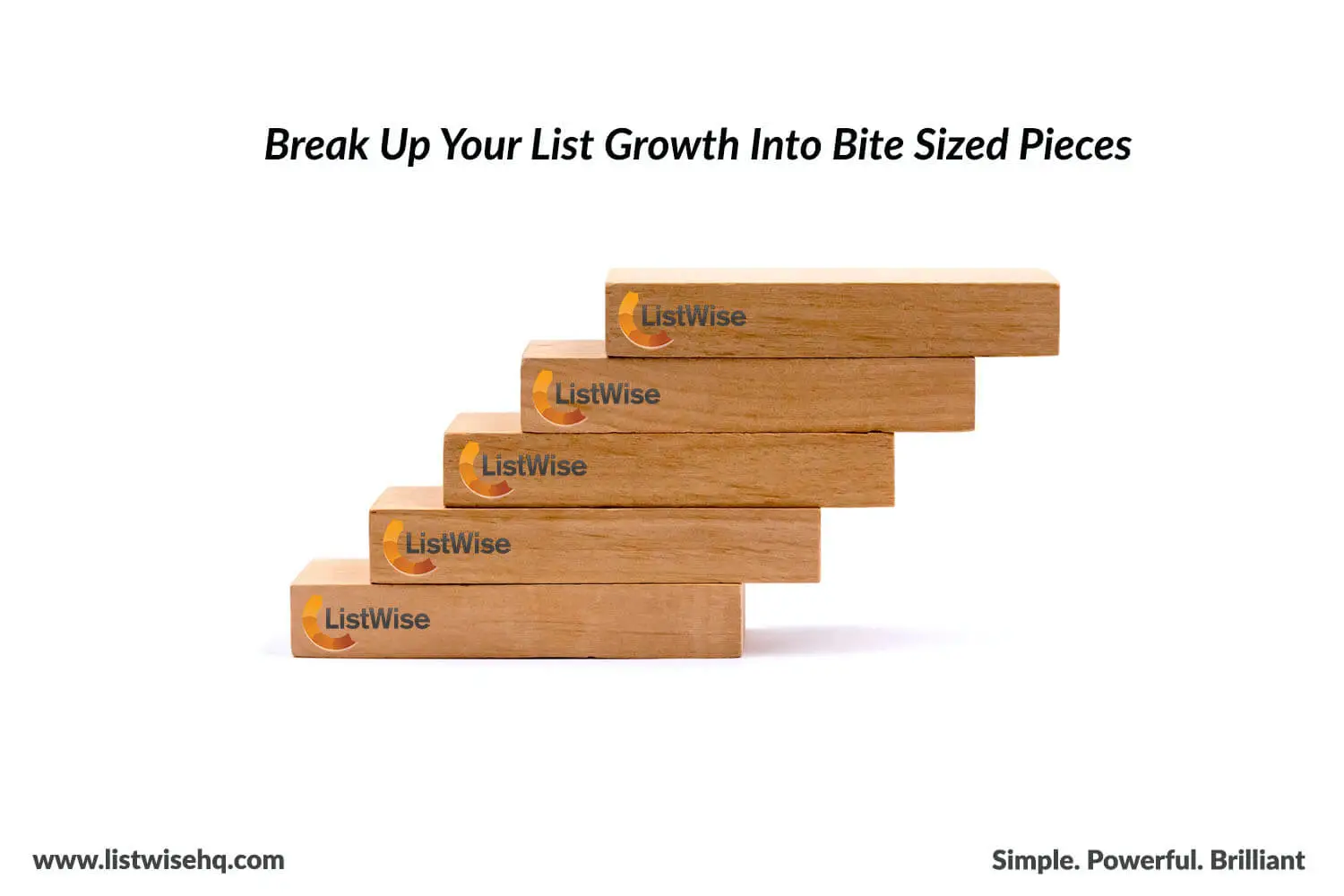Break Up Your List Growth Into Bite Sized Pieces
List growth is a primary email-marketing goal. It always has a direct impact on your business results. You want to set realistic goals that you can measure and that means that it should be in reach and attainable, given the budget and resources available for email marketing. Instead of having one big number as a growth goal and just thinking up a bunch of tactics, the next step will be to break up that big number into smaller, more manageable pieces. Monitoring, improving and adjusting for changes requires a more granular approach.

You can grow your list through gaining new opt-ins, but at the same time, expect around one third of your list to become inactive each year. Sadly, not every list member will actively follow your brand and company’s performance. Increasing new subscribers is very different than reducing unsubscribes or keeping current email lists subscribers engaged. Each of these two aspects should each have their own targets.
1. Cross opt-in
If you have several brands, lists or sub-lists, you can cross promote and get someone to opt-in for more than one list. These are different than completely new subscribers though. Which would you rather have? 1 person on 3 lists or 3 people on 1 list? The answer might be different depending on your brand and lists.
2. Organic growth
Growing your list via your own channels is a great way to get started and quickly gather more subscribers. People that show up at your doorstep (website, store) are on average more likely to be engaged already. Maybe you have already several sign-up options on your site, including sign ups with each campaign you are doing, but still need to optimize them.
3. Active growth: Step outside your normal reach and get ‘em
This category is actually quite big. Actively promoting new sign ups through external action. There are companies that can help you with running (email) lead capture campaigns. Literally you are paying to get those new subscribers. There is budget involved, per campaign or per newly registered opt-in. You could also set up your own inbound marketing funnels. The point being that these promotions are often outside of your normal reach. The first step in these is to map your email list growth touch points.
When a company invests in growing their lists , with the help of external companies, they often look at the cost per new subscriber, cost per acquisition (subscribers turning into customers) or payback period – the time it takes to earn back the investment.
4. Preventing the number of “unsubscribes”
You probably have seen some nice unsubscribe prevention tactics and examples before. The chances are that preventing unsubscribes isn’t the number one most interesting tactic to start with. If you, for instance, start sending more emails, the number of unsubscribes will increase, but is that a big problem?
Often people that are no longer interested in your product/service will leave your list. This should be the least of your worries It is a self-cleaning effect and keeps your email list healthy. If you have a target for preventing unsubscribes, these shouldn’t be your concern. Instead, ask their unsubscribe reason and if they would still be interested in the product. You might find that unsubscribes are even a smaller issue than you had expected.
A stronger, and active list is the heart of your email program. It makes sense to put a strong focus on growing your email list. But don’t fall into the trap to treat all growth activities equal. Split them into smaller goals and work on each separately – giving priority to the activities that give the best dividends.
While it is great to have an active list, it is also paramount that you have a clean list. That is, every email address in your list is legitimate. You can verify every email in your list with ListWise, the bulk email verification software.

